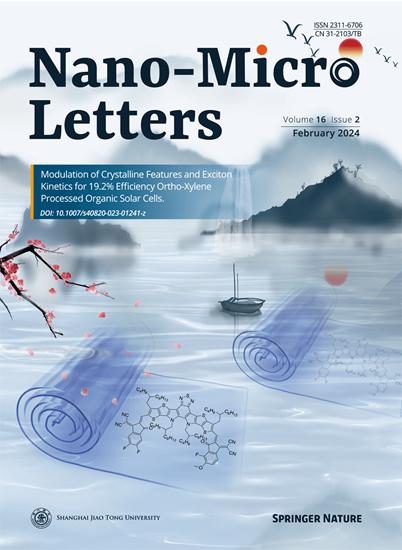电纺丝纳米纤维基复合材料监测物理、生理和体液信号的研究进展。
IF 36.3
1区 材料科学
Q1 Engineering
引用次数: 0
摘要
柔性电子皮肤(E-skin)传感器为检测人体信号提供了创新的解决方案,实现了人机交互,推动了智能机器人的发展。由于其卓越的机械性能,可调节的透气性和轻质性,静电纺纳米纤维特别适合电子皮肤应用。基于纳米纤维的复合材料由三维结构组成,将一维聚合物纳米纤维与其他功能材料集成在一起,实现了高效的信号转换,并将其定位为下一代智能电子产品的理想平台。本文首先介绍了静电纺丝技术的概况,包括远场静电纺丝、近场静电纺丝和熔体静电纺丝。讨论了电纺纳米纤维的不同形态,如核壳结构、多孔结构、空心结构、珠状结构、Janus结构和带状结构,以及加入功能材料以提高纳米纤维性能的策略。在此基础上,本文详细介绍了电纺纳米纤维基复合材料(即纳米纤维/水凝胶、纳米纤维/气凝胶、纳米纤维/金属),重点介绍了它们在人体信号检测中监测物理、生理、体液和多信号等方面的最新进展。同时,本文探讨了能够响应多种刺激的多模态传感器的发展,重点关注解耦多信号的创新策略及其最新进展。最后,分析了当前面临的挑战,展望了电纺纳米纤维复合材料传感器的发展前景。本文旨在推动下一代柔性电子器件的设计和应用,促进多功能传感和健康监测技术的突破。本文章由计算机程序翻译,如有差异,请以英文原文为准。
Recent Progress of Electrospun Nanofiber-Based Composite Materials for Monitoring Physical, Physiological, and Body Fluid Signals
Highlights
-
This work reviews recent advancements in electrospun nanofiber-based composite materials for monitoring physical, physiological, and body fluid signals, with a particular focus on the design strategies of nanofiber-based composites.
-
The electrospinning technologies, nanofiber morphologies, fabrication of nanofiber membranes, and the integration of nanofibers with materials such as hydrogels, aerogels, or metals are comprehensively reviewed and discussed.
-
The current challenges and future prospects of nanofiber-based composite materials for human monitoring are discussed and analyzed.
求助全文
通过发布文献求助,成功后即可免费获取论文全文。
去求助
来源期刊

Nano-Micro Letters
NANOSCIENCE & NANOTECHNOLOGY-MATERIALS SCIENCE, MULTIDISCIPLINARY
CiteScore
32.60
自引率
4.90%
发文量
981
审稿时长
1.1 months
期刊介绍:
Nano-Micro Letters is a peer-reviewed, international, interdisciplinary, and open-access journal published under the SpringerOpen brand.
Nano-Micro Letters focuses on the science, experiments, engineering, technologies, and applications of nano- or microscale structures and systems in various fields such as physics, chemistry, biology, material science, and pharmacy.It also explores the expanding interfaces between these fields.
Nano-Micro Letters particularly emphasizes the bottom-up approach in the length scale from nano to micro. This approach is crucial for achieving industrial applications in nanotechnology, as it involves the assembly, modification, and control of nanostructures on a microscale.
 求助内容:
求助内容: 应助结果提醒方式:
应助结果提醒方式:


